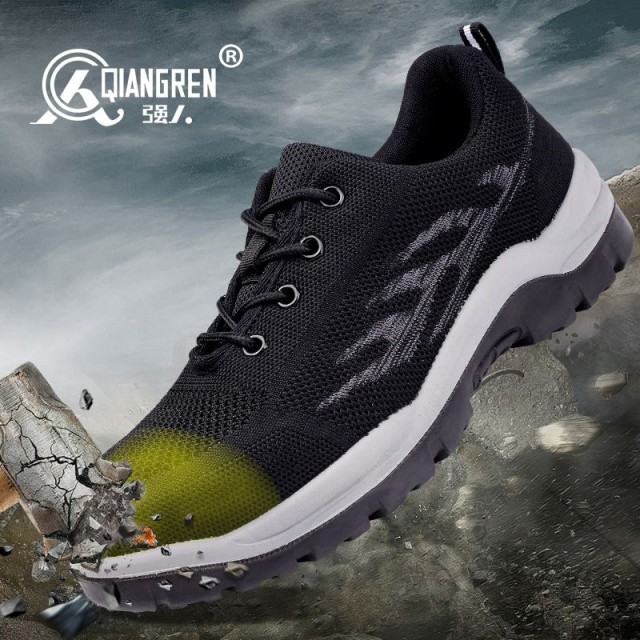Finding the right safety toe boots isn’t just about compliance—it’s about matching protection to your daily risks, comfort needs, and budget. Whether you’re navigating heavy machinery, electrical hazards, or airport security, the wrong choice can mean unnecessary fatigue, safety gaps, or even failed inspections. Here’s how to decide between steel and composite toes with confidence.
Steel Toe vs. Composite Toe: Core Differences Explained
Material Composition and Safety Standards
Both steel and composite toes meet ASTM F2413 safety standards for impact and compression resistance, but their materials dictate where they excel:
- Steel toes use reinforced alloy caps, offering the highest protection against crushing forces (e.g., falling machinery or heavy tools).
- Composite toes rely on non-metallic materials like Kevlar, fiberglass, or plastic. They’re lighter and non-conductive, ideal for electrical work or cold environments.
Key takeaway: Steel is the go-to for brute-force protection; composite prioritizes comfort and specialized hazards.
Weight and Long-Term Wearability
- Steel toes add ~30% more weight per boot, which can lead to leg fatigue during long shifts. However, their durability often means fewer replacements over time.
- Composite toes reduce weight by up to half, easing strain for workers who walk or stand constantly. Trade-off: They may crack under extreme stress sooner than steel.
Pro tip: For roles like warehouse picking or airport security, where mobility matters, composite’s lightness often outweighs its slightly lower durability.
Choosing the Right Toe for Your Job
High-Impact Industries (Construction, Manufacturing)
Steel toes dominate here. Their superior crush resistance (typically rated for 2,500+ lbs of force) is critical when handling:
- Falling I-beams or concrete blocks
- Heavy equipment operation
- Metal stamping or forging
Example: A construction foreman might prioritize steel toes’ tested resilience over composite’s comfort when navigating active worksites with crane loads overhead.
Cold Environments and Electrical Hazard Zones
Composite toes shine:
- No thermal conductivity—unlike steel, they won’t freeze your toes in subzero temperatures (e.g., oil rigs or refrigerated warehouses).
- Non-conductive properties prevent electrical shocks, making them mandatory for electricians or utility workers.
Note: Some composite models add insulation for Arctic conditions, a feature steel can’t replicate.
Travel-Sensitive Roles (Airports, Security)
Composite’s metal-free design avoids metal detector triggers—a must for:
- TSA personnel
- Military base contractors
- Courthouse security staff
Real-world impact: A composite toe boot lets airport baggage handlers pass through scanners without delays, a daily hassle with steel toes.
Cost and Longevity Considerations
Upfront Price vs. Replacement Frequency
- Steel toes cost 20–30% less upfront and often outlast composites by 1–2 years in rough conditions.
- Composite toes command a premium but save on long-term comfort (reducing fatigue-related injuries) and specialized needs (e.g., electrical safety).
Budget hack: If your job doesn’t require composite’s niche benefits, steel offers reliable protection at a lower initial investment.
Warranty and Durability Testing Data
Most manufacturers test both types under ASTM F2413-18 standards, but real-world longevity varies:
- Steel toes resist punctures and abrasions better, ideal for rocky terrains or welding sparks.
- Composite toes may degrade faster in high-heat environments (e.g., foundries), but newer fiber blends are closing this gap.
Ask your supplier: 3515’s bulk pricing models can offset costs for distributors stocking both types, ensuring clients get tailored options.
Final Recommendation: Match Your Boot to Your Daily Risks
Still unsure? Answer these questions:
- Do you face crushing hazards daily? → Steel toes.
- Is weight or electrical safety a concern? → Composite toes.
- Need to pass metal detectors? → Composite, no contest.
For bulk buyers like distributors, offering both steel and composite options from 3515 ensures you cover every worksite need—from budget-conscious construction crews to elite electrical contractors.
Ready to equip your clients with the right safety footwear? Partner with 3515 to source durable, job-specific boots at scale.
Products You Might Be Looking For:
View high-protection steel toe work boots
Explore customizable steel toe safety footwear
Browse durable steel toe work shoes
Check out heavy-duty steel toe boots
See athletic-style steel toe safety shoes
Related Products
- Wholesale Customizable Suede Safety Boots - Puncture-Proof with Velcro Closure
- Puncture-Resistant Velcro Safety Boots for Wholesale & Custom Manufacturing
- Customizable Anti-Smash Safety Boots for Wholesale & Private Label Manufacturing
- Wholesale Durable Breathable Safety Boots Custom OEM Manufacturer
- Wholesale Durable Safety Boots | Custom Steel Toe & Puncture-Resistant Manufacturing
Related Articles
- How to Choose Work Boots That Match Your Job's Safety Demands
- How to Choose Work Boots That Match Your Job Demands and Safety Needs
- Matching Men’s Work Shoe Safety Technologies to Workplace Hazards
- Work Boots vs. Western Boots: How to Choose the Right Footwear for Labor Safety
- How to Choose Work Boots That Match Your Industry's Safety Needs




















